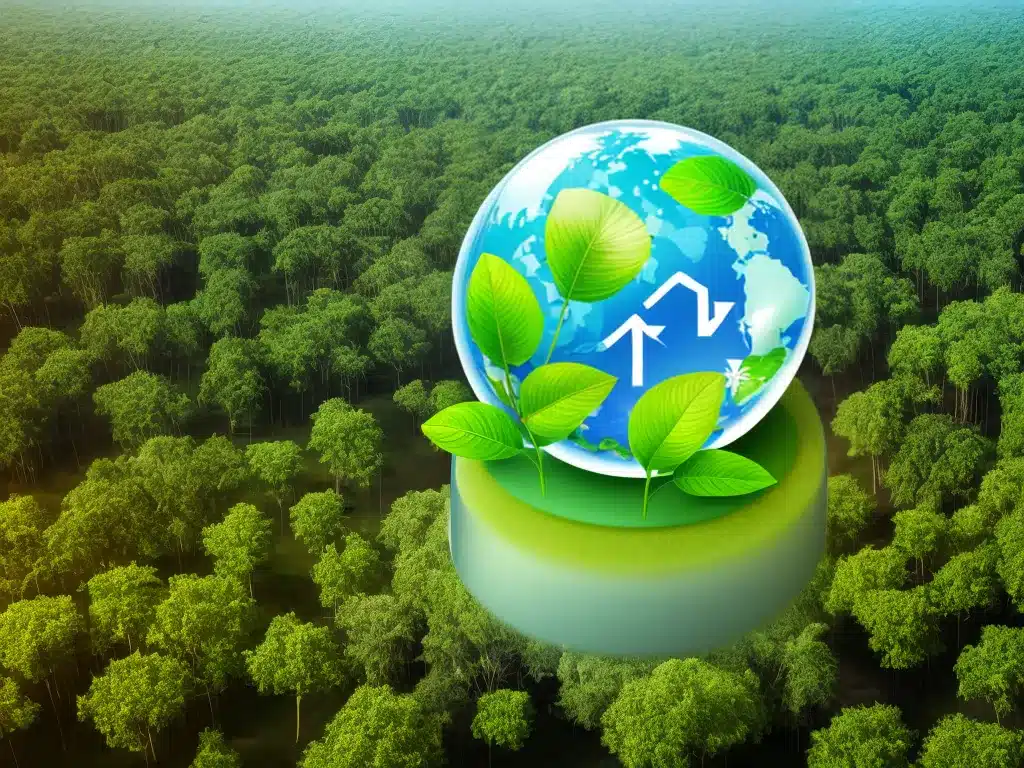
IoT for Environmental Sustainability: Green IoT Initiatives
The Internet of Things (IoT) offers immense potential to enable environmental sustainability through numerous Green IoT initiatives. As an emerging technology, IoT allows objects to be sensed, monitored and controlled remotely across existing network infrastructure, facilitating more efficient use of resources. This article explores how IoT can be leveraged to reduce humanity’s environmental impact in areas such as energy, transportation, agriculture, and waste management.
Energy Management
IoT enables intelligent energy management by connecting devices and assets to monitor energy usage patterns and dynamically optimize consumption. Specific applications include:
-
Smart Grid – IoT sensors monitor electricity demand and infrastructure performance, enabling dynamic balancing of the grid for improved efficiency and stability.
-
Smart Metering – Smart meters connected to IoT networks provide granular visibility into energy usage, allowing consumers to identify savings opportunities.
-
Smart Lighting – Connected public lighting systems optimize lighting usage by dimming or shutting off lights when not needed, reducing energy waste.
-
Smart Buildings – Building automation systems use IoT-enabled sensors and controls to minimize energy consumption for lighting, HVAC and other systems.
-
Renewable Energy – IoT monitors performance of solar, wind and other renewable assets for predictive maintenance, maximizing clean energy production.
Sustainable Transportation
IoT is transforming transportation systems to be more efficient, less polluting and smarter overall:
-
Fleet Tracking – GPS trackers on vehicles allow fleet operators to optimize routes in real-time for reduced mileage and fuel consumption.
-
Autonomous Vehicles – Self-driving vehicles leverage a network of IoT sensors for navigation and safety, enabling smoother driving and less congestion.
-
Smart Parking – Sensor-enabled parking spaces detect availability and communicate it to drivers, reducing traffic from parking searches.
-
Traffic Optimization – Intelligent traffic signals and sensors monitor real-time traffic patterns for dynamic signaling adjustments to ease congestion.
-
Vehicle Telematics – On-board diagnostics connected to the IoT provide insight into vehicle usage and performance to enhance preventative maintenance.
Sustainable Agriculture
IoT-driven agriculture applies technology to enhance food production efficiency:
-
Precision Farming – Interconnected sensors enable targeted analysis of soil conditions, irrigation needs and crop health at the sub-field level.
-
Smart Greenhouses – Climate, humidity and lighting inside greenhouses are intelligently monitored and controlled to optimize growing conditions.
-
Livestock Monitoring – Wearables track livestock health indicators for early illness detection and improved welfare.
-
Cold Chain Tracking – Sensor tags track perishable goods temperature and location throughout transit to minimize spoilage.
-
Water Usage – Smart water meters and pumps efficiently monitor and deliver precise irrigation to reduce waste.
Waste Management
IoT improves sustainability in waste collection and processing:
-
Smart Bins – Sensors on public waste bins optimize pick-up routes by detecting real-time fill levels.
-
Fleet Optimization – Waste collection is enhanced by vehicle tracking and condition monitoring via IoT.
-
Landfill Monitoring – Interconnected sensors track toxicity, methane emissions and other landfill conditions to minimize environmental impact.
-
Water Leakage – Municipal water systems use real-time leakage monitoring via IoT to prevent waste and pollution.
-
Recycling Sorting – Computer vision and IoT automation improve recycling accuracy at sorting facilities for increased material recovery.
In summary, IoT is transforming sustainability across sectors by enabling intelligent tracking, measurement and automation of resource usage. Widespread adoption of Green IoT initiatives will be critical for reducing humanity’s environmental footprint.












